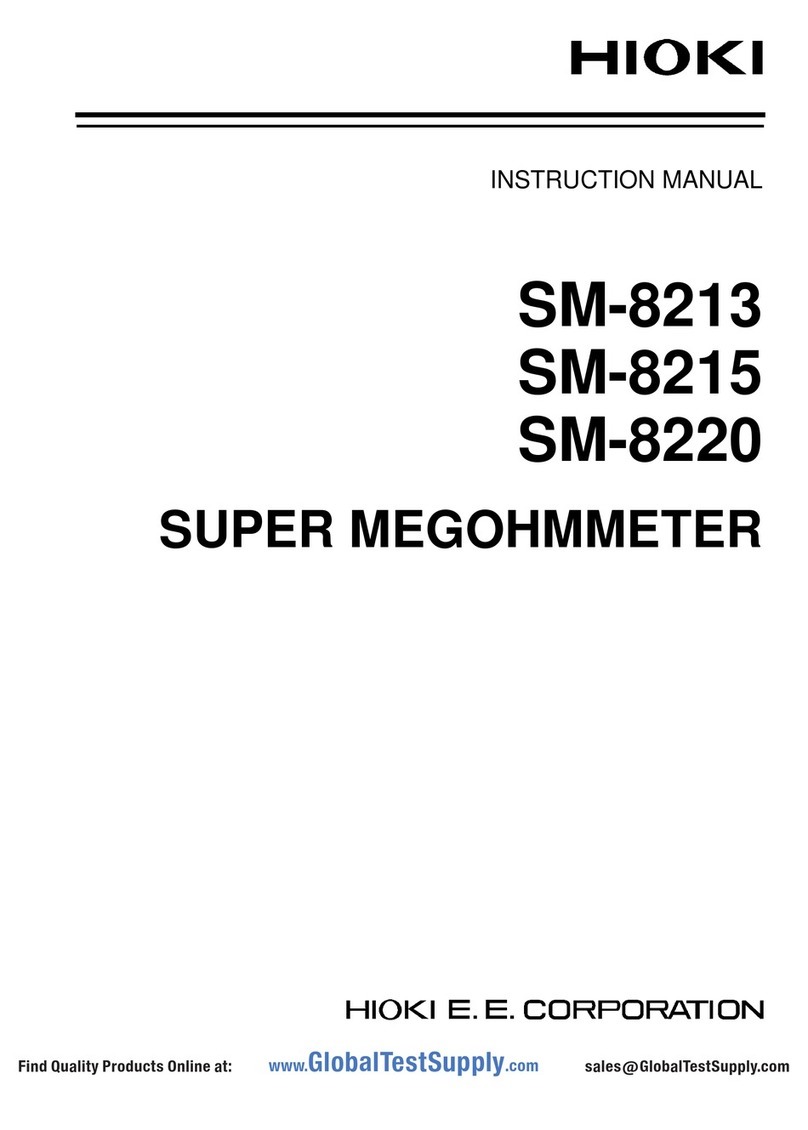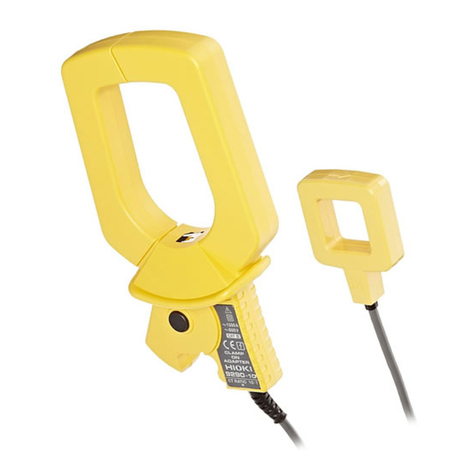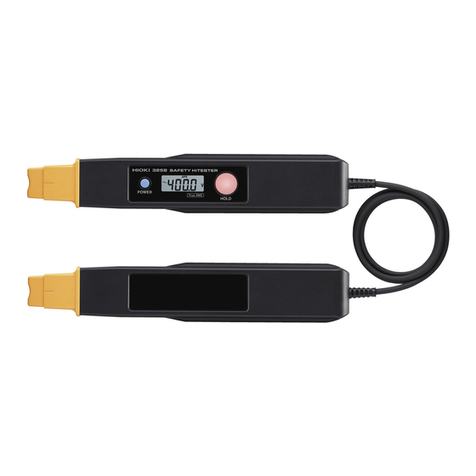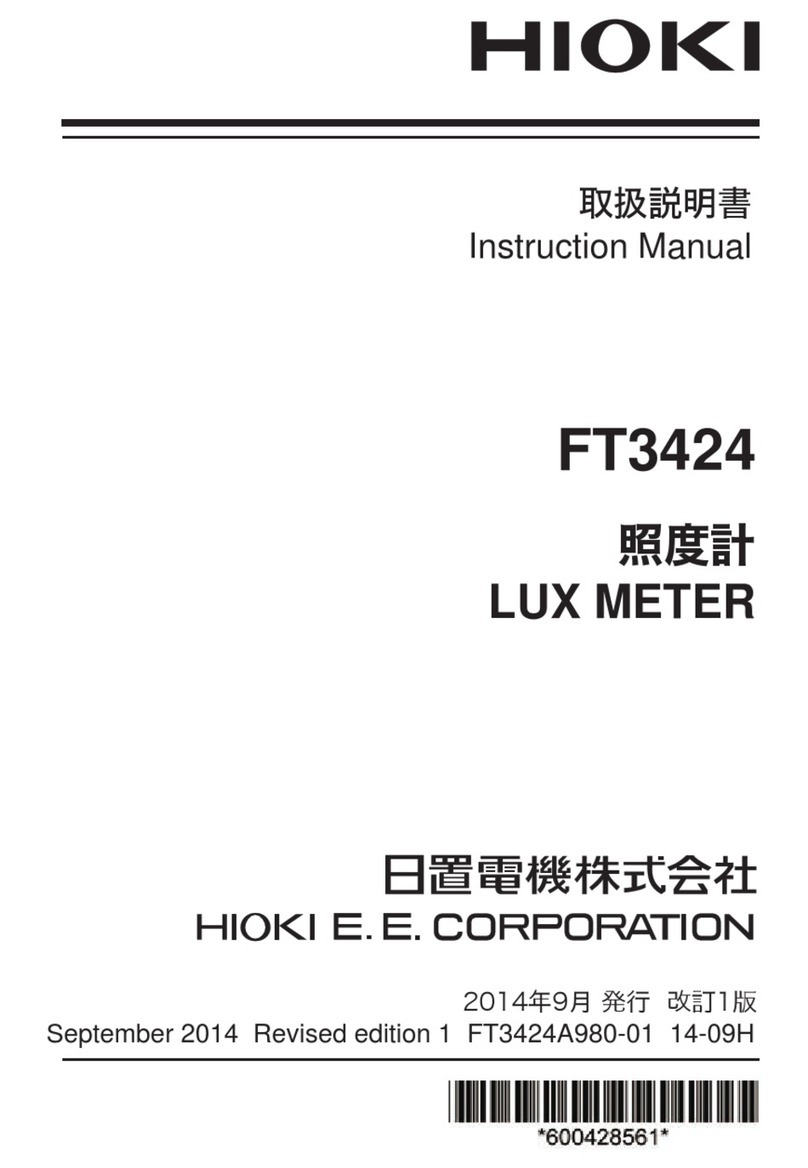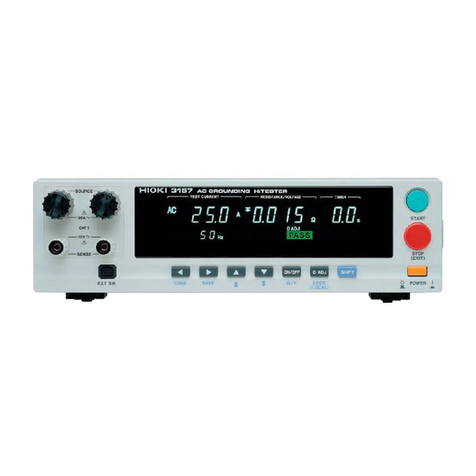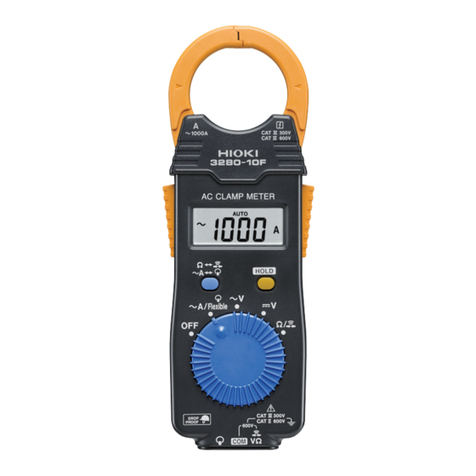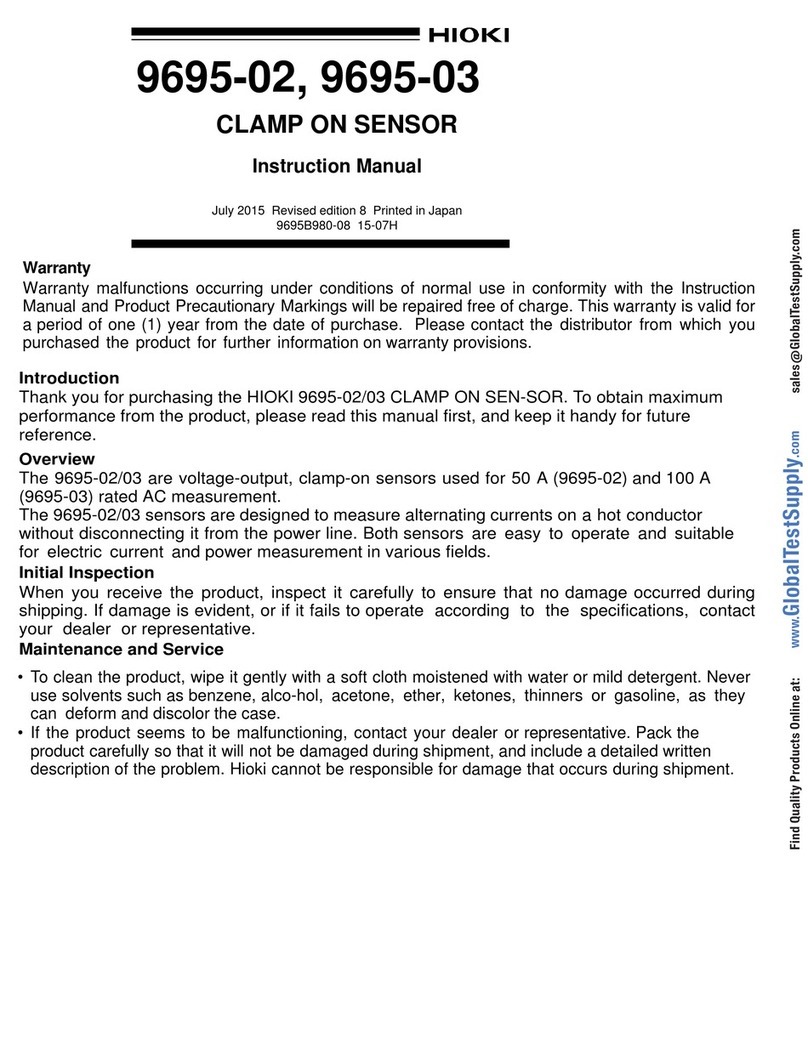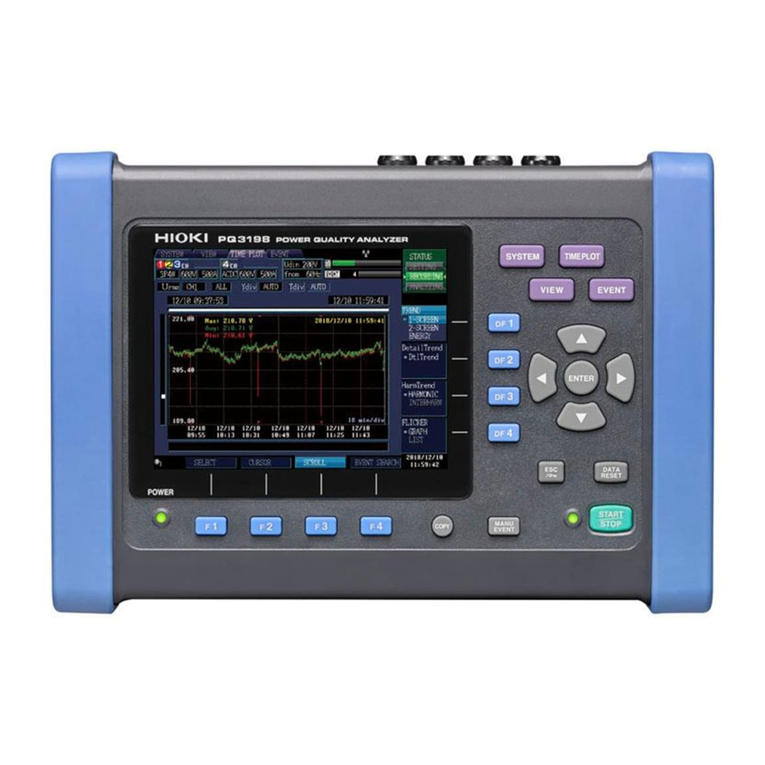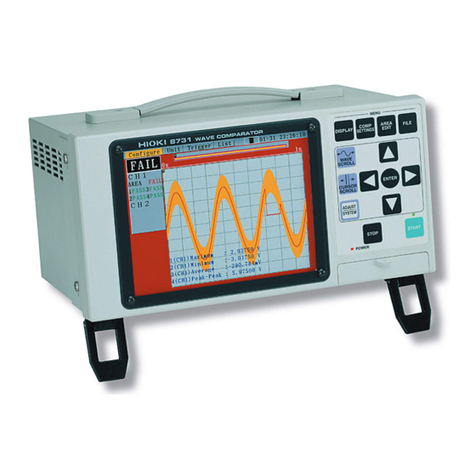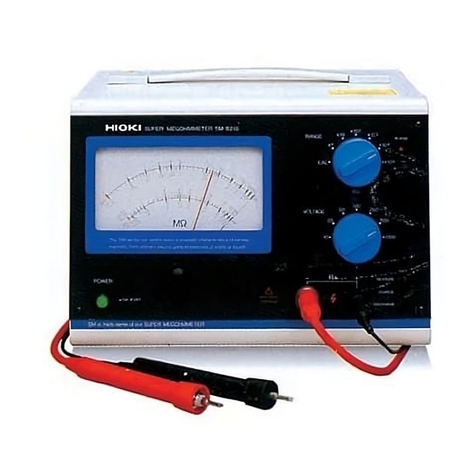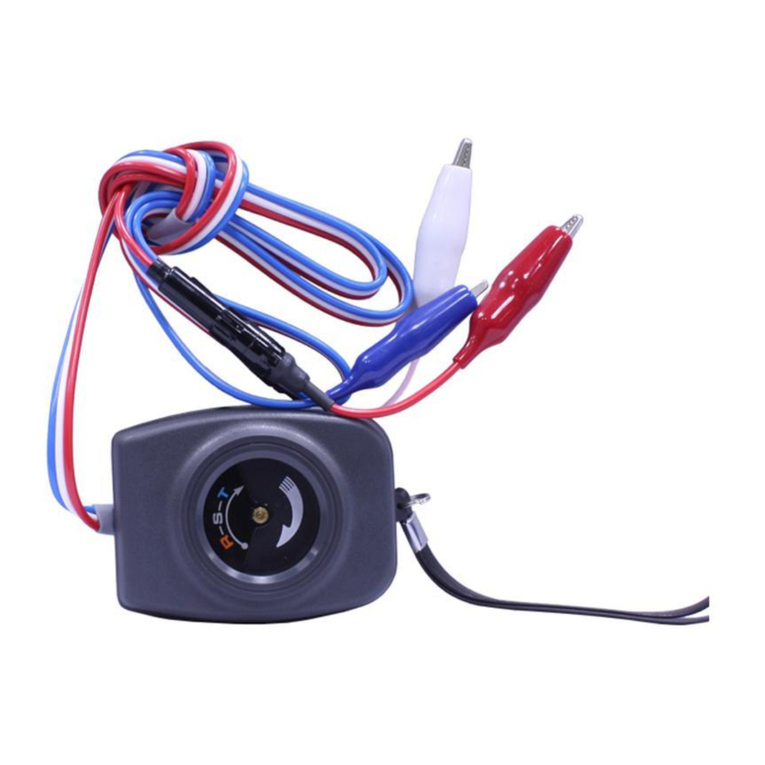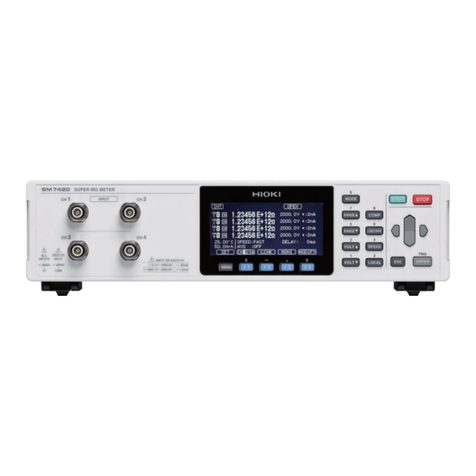iv
―――――――――――――――――――――――――――
Safety Notes
――――――――――――――――――――――――
Measurement categories (Overvoltage
categories)
This instrument complies with CAT I safety
requirements.
To ensure safe operation of measurement
instruments, IEC 61010 establishes safety
standards for various electrical environments,
categorized as CAT I to CAT IV, and called
measurement categories. These are defined as
follows.
CAT I: Secondary electrical circuits that are
connected to a wall outlet through a
transformerorsimilardevice.
CAT II: Primary electrical circuits in
equipment connected to a wall outlet
via a power cord (portable tools,
household appliances, etc.)
CAT III: Primary electrical circuits of heavy
equipment (fixed installations)
connected directly to the distribution
panel, and feeders between the
distribution panel and outlets.
CAT IV: The circuit from the service drop to
the service entrance, then to the
power meter and to the primary
overcurrent protection device.
